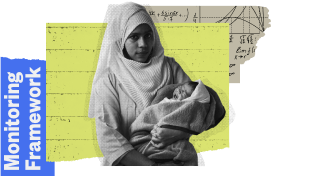Philippines
Download full country profile
 116,451,700
Total Population
116,451,700
Total Population
A dispute exists between the Governments of Argentina and the United Kingdom of Great Britain and Northern Ireland concerning sovereignty over the Falkland Islands (Malvinas).
The boundaries and names shown and the designations used on this map do not imply official endorsement or acceptance by the United Nations.
Philippines’ Population dynamics Data


Total Fertility Rate (births per woman)
Adolescent (15-19 years) Birth Rate (births per 1,000 girls)
Maternal Mortality Ratio (Per 100,000 live births)
Philippines’ national commitment
As part of its ICPD25 commitments, the Republic of the Philippines has committed to actualizing and sustaining the promise of ICPD and the 2030 Agenda for Sustainable Development; and to fully implement responsible reproductive health care and universal health care laws to reduce unmet need for modern family planning and adolescent pregnancy.
The Philippines is one of the eight countries where more than half of the projected increase in the global population up to 2050 will be concentrated.
In 2022, Philippines’ total fertility rate (TFR) – the number of children that would be born to a woman if she were to live to the end of her childbearing years – is 2.72. Unmet need for family planning is higher among rural women than urban women, and is almost 1.5 times higher among women with no education compared with women with higher education. It is also highest among women in the poorest households, and decreases as household income increases.
The maternal mortality ratio in the Philippines decreased from 2000 to 2017
and was estimated to be 121 maternal deaths per 100,00 live births in 2017, the year for which the most recent data is available.
SDG 5.6.2 reflects the extent to which prevailing laws enable or disable women and men’s full and equal access to health and rights.
On average, the Philippines has achieved 71% of enabling laws and regulations that guarantee full and equal access to maternity care, and 60% to contraceptive and family planning services, and 100% to sexuality education.
The adolescent birth rate for the Philippines has decreased slightly from 1990 to 2020;
it is nine times higher among adolescents with only primary education compared with those with higher education, and 7.5 times higher among teenagers who live in the poorest households compared to those in the wealthiest households.
Among girls 20-24 years, births before age 18 are higher among girls who live in rural areas, those with primary education, and those girls from the poorest households.
The percentage of women from the poorest households who have a birth before age 18 is nearly four times higher than those from the wealthiest households.
Amid the exacerbation of child rights issues due to the COVID-19 pandemic, compounded by the onslaught caused by Typhoon Odette (Rai), a major recent milestone has been the passage of the “Prohibition of Child Marriage Law” at the start of 2022.
The phenomenon of child marriage has been seen to have been practiced in indigenous and Muslim communities in the country. Globally, the Philippines ranks 12th in the absolute number of child marriages. While these communities have been trying to address this issue through community-based programmes, passing a legislation strengthens the legal framework and protection of adolescent girls in line with Global Commitment 5.
Philippines’ national commitment
At the Nairobi Summit, the Philippines has committed to accelerating efforts to reach and optimize the demographic dividend.
Employment trends (i.e., those currently working and who have worked in the last 12 months) for women have remained relatively the same in the Philippines from 2001 to 2016.
Young people who are not in education, employment or training (i.e., the NEET population) quantifies the proportion of young people who find themselves outside of the educational system and without work. In the Philippines, the percentage of female youth not in education, employment or training has been decreasing, while that for males has remained approximately the same.













































